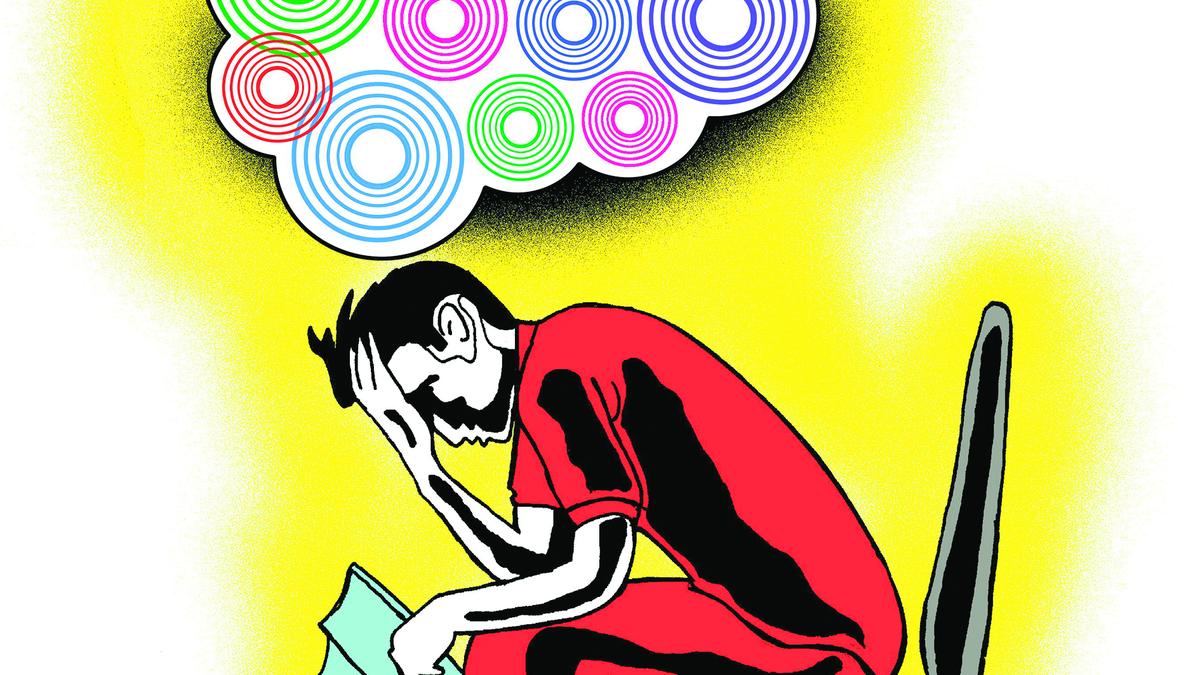There is little awareness on how discrimination and a toxic work culture can induce mental health issues at the workplace.
| Photo Credit: Satheesh Vellinezhi
The theme of World Mental Health Day (October 10) this year is about ‘prioritising mental health in the workplace’. The critical link between mental health and work is examined in three articles on the Editorial and Opinion pages — two in the print edition and one in the online edition
Karthik, a driver at a university, was happy when I asked him how he feels on campus. “We are drivers. So, nobody values us, Sir,” he replied. “The professors are elitist. They don’t even bother to greet us. They only mingle with people at their ‘level’”. Similarly, while I was alighting from an autorickshaw, the driver, Ajay, told me, “No other customer has talked to me like you did, Sir.” I asked him what the reason could be. “Who bothers to talk to a driver, Sir,” he replied. It is common to see people at the higher echelons of society cross paths with drivers and security guards and disregard them. To willfully not recognise someone is moral violence.
Even though research has time and again shown that social exclusion, shaming, and invisibilisation are pivotal social reasons for poor mental health, these are seldom spoken about. We often notice mental health awareness campaigns that say, “Depression is the second largest global burden” or “One in every four people suffers from mental illness”. These do not account for the inequality, inequity, poverty, stigma, and discrimination based on body image, caste, class gender, sexuality, race, and so on, which perpetuate mental distress every day. Mainstream mental health systems seldom speak against the sociopolitical causes of difficulties and disabilities. Thus, they collide with majoritarian power blocs in reinforcing oppression by framing socio-political problems as mental health problems to be treated with psychopharmaceuticals and individualised psychological therapies. Addressing systemic problems with individual solutions is an invalid approach. It only helps to commodify mental health and create markets for the burgeoning mental health industry.
The theme of World Mental Health Day 2024 is ‘Mental Health at Work’. There is little awareness on how discrimination and a toxic work culture can induce mental health issues at the workplace. Recently, Anna Sebastian Perayil, a Chartered Accountant employed at Ernst and Young, died of a cardiac arrest. Her mother alleged in an open letter that stress at the workplace had caused her death. Ernest and Young said that Anna had an employee for only four months. While it is difficult to say what happened in Anna’s case, it is true that psychologists are increasingly being recruited by multinational companies and sometimes, they cover up the discriminatory labour policies and toxic cultures of these companies by looking at mental health as an individual problem that requires individual solutions. They prescribe yoga, meditation, mindfulness, etc. Thus, mental health becomes an amoral, apolitical, and value-neutral issue.
A series of reports presented by the United Nations Special Rapporteur on Right to Health at the UN General Assembly emphasised the shift towards rights-based mental health systems from the biomedical model. Power imbalance was cited as the major hindrance in progress towards mental health instead of the oft-quoted chemical imbalance theories of mental health problems. It is important to be cognisant that everyday relationships are healing and the key to good mental health is with each one of us. We can unlock it with small acts of compassion, justice, and respect. According to the acclaimed psychiatrist Van der Kolk, “Being able to feel safe with other people is probably the single-most important aspect of mental health; safe connections are fundamental to meaningful and satisfying lives”.
Stories of shaming and dehumanisation are potential avenues for understanding lived experiences and reimagining mental health as a moral and ethical issue. For instance, scholars have redefined the social architecture of bullying. It is no longer seen from a dyadic perspective (bully-victim), but instead a triadic perspective (bully-victim-bystander). Bullying is tied to a lack of empathy, imbalance of power, rejection of differences, and majoritarian dominance that can have fatal consequences. It is crucial how the teachers and institutional administrators respond to bullying as bystanders. The notion of campus psychologists as one-stop centres for campus mental health arises from a very reductionist understanding. Mental health is a collective responsibility and teachers as well as the administration are pivotal stakeholders. Teachers need to be primary responders in preventing the escalation of distress among vulnerable students.
Karthik and Ajay simply desire to belong and be accepted. Respect, acceptability, and kindness provide a sense of well-being. As Laurence Kirmayer, the psychiatrist-philosopher, said: “The human brain is a social brain, and the social world is a cultural world”. It is high time we viewed mental health as a moral and ethical issue. The greatest gap in mental health interventions has been in understanding the lived experiences of suffering. That must change. As Bell Hooks said, “Rarely, if ever, are any of us healed in isolation. Healing is an act of communion.”
Sudarshan R. Kottai is Assistant Professor, Department of Humanities and Social Sciences, IIT Palakkad
Published – October 10, 2024 12:53 pm IST

